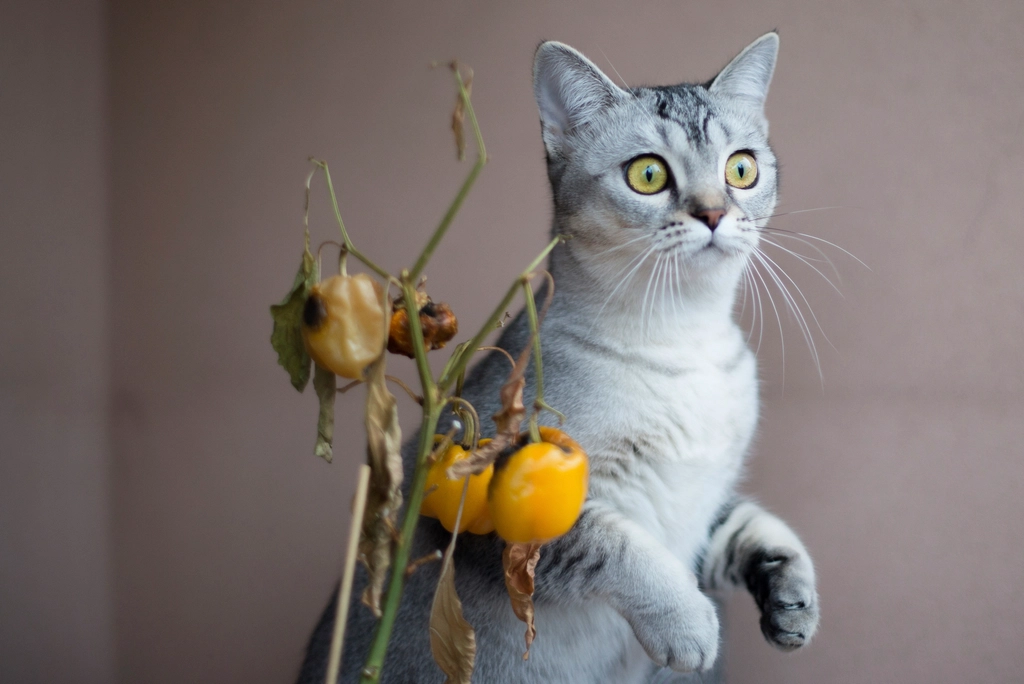Have you ever woken up to your cat curled at your feet, purring like a tiny engine, and wondered if that’s their way of telling you the world is okay? Cat owners know all too well that felines are mysterious creatures. They hide when things feel off and strut confidently when all is calm. But what if your cat’s daily habits are more than just quirks—what if they’re a secret code about your own safety and peace? Let’s unravel how your cat’s routine can be a comforting, even lifesaving, barometer for your well-being.
The Morning Greeting: A Signal of Stability

When your cat greets you every morning—maybe with a gentle meow or a soft head-butt—it’s not just because they want breakfast. Cats are creatures of habit, and a consistent morning greeting means they feel secure in their environment. If your feline friend skips this ritual, it could be a sign that something is amiss, either in their world or yours. Their predictability is a sign that all is well. It’s like an unspoken promise: “Everything’s okay, human, go about your day.” This tiny act is their way of saying, “We’re safe.” When routines break, it’s time to check in on both your cat and yourself.
Eating Habits: A Mirror of Calm

Have you noticed your cat eats at the same times every day? Stable eating habits are a sure marker of safety. When cats feel stressed or sense danger, their appetite is often the first thing to change. If your cat’s bowl is empty at the usual time, you can breathe easy. But if they’re picking at their food or skipping meals, it’s a red flag something isn’t right—maybe there’s a change in your home, or perhaps your own stress is rubbing off on them. Their willingness to eat at regular times reflects a peaceful environment, both for you and them.
Litter Box Routine: Trust in the Territory

Cats are meticulous about their bathroom habits. If your cat uses the litter box like clockwork, it’s a sign they feel safe in their domain. Any deviations—like avoiding the box or sudden accidents—can indicate stress, illness, or environmental changes. A steady litter box routine means your home is their secure fortress. In a way, their trust in their territory says a lot about the overall atmosphere at home. Pay attention to this often-overlooked sign—it’s like your cat’s silent vote of confidence in your shared space.
The Midday Nap: Peace in Dreamland

A cat who can stretch out and nap in the middle of the day is a cat who feels safe. Their favorite napping spot—by the window, on your bed, or curled up in a sunny patch—becomes their sanctuary. If they’re suddenly hiding or sleeping in unusual places, it can mean they sense something’s up. A relaxed, sprawled-out cat is a living, purring “all clear.” Their comfort in dreamland mirrors the calm in your home. When your cat naps deeply, you can rest easy too.
Playtime Patterns: Confidence on Display

When your cat brings you a toy or initiates a game, it’s more than just play—it’s proof they feel secure. Confident, playful behavior shows that your cat isn’t on high alert. Playtime routines, especially if they happen at the same time each day, are a clear sign of safety. If your cat suddenly loses interest in play, it might be time to look around for changes. Their energy and enthusiasm are like a little beacon: “Things are good here.” Never ignore the power of a playful pounce.
Evening Rituals: Settling Down Together

As the day winds down, many cats have a routine—maybe they sit with you on the couch or curl up beside you for bedtime. This evening ritual is their way of signaling trust and contentment. It’s their time to unwind, just like you. If your cat suddenly avoids these moments, it could mean something is off in their world or yours. Their presence at your side as night falls is a simple, silent assurance that all is well. Cherish these moments—they’re a nightly stamp of approval.
Grooming Behavior: A Sign of Inner Peace

Cats are fastidious groomers when they feel safe. A cat who keeps up with their grooming routine is showing that they’re relaxed. Excessive grooming or sudden neglect of it can be signs of stress or illness. When your cat grooms themselves calmly and regularly, it’s their way of saying, “I feel good, and you should too.” Think of it as their personal meditation practice—a clean cat is a happy, safe cat.
Window Watching: Curiosity Without Fear

Does your cat spend hours perched by the window, watching birds and the world go by? This is a sign of a secure and curious cat. If they’re comfortable enough to focus on the outside world, they’re not worried about threats inside. Sudden disinterest in window watching or hiding away can indicate anxiety or fear. A cat who loves to observe but never hides is demonstrating that your environment is safe and predictable. Their fascination with the world is a reflection of their inner calm.
Vocalizations: The Language of Comfort

Cats communicate through their meows, chirps, and purrs. A cat who talks to you in their usual way is at ease. Changes in vocalization—like sudden silence or constant yowling—can mean stress or discomfort. Regular, gentle vocalizations are their way of checking in with you, like a friend saying, “Hey, everything’s fine.” Listen closely to your cat’s sounds; they’re often more honest than words. Their voice is a daily reassurance of safety.
Following You Around: The Shadow of Security

Some cats love to follow their humans from room to room. This isn’t just about curiosity—it’s about trust. When your cat shadows you, it means they feel secure enough in the environment to explore with you. If they suddenly stop, it could be a sign they’re uneasy or sensing something off. Their constant companionship is a living, furry endorsement of how safe they feel. When your cat is your shadow, you can trust things are steady at home.
Interactions With Other Pets: Harmony in the Pack

If you have more than one pet, pay attention to how your cat interacts with their furry siblings. Calm, predictable interactions are a sign of overall safety. Aggression, hiding, or sudden changes in behavior can point to stress in the environment. Harmony among pets means everyone feels secure. When your cat confidently mingles with others, it’s a silent message that your home is a peaceful place for all creatures—humans included.
Reaction to Visitors: Confidence Over Caution

How your cat responds to guests can reveal a lot about their sense of safety. If your cat greets visitors or observes from a comfortable distance, it means they trust their environment. Hiding or acting aggressively may mean they feel threatened. A cat who isn’t fazed by new faces is telling you, “Our home is a fortress.” Their comfort with visitors is a sign of a stable, secure routine.
Response to Loud Noises: Calm Amid Chaos

Life is full of unexpected sounds—thunder, doorbells, or laughter. A cat who remains calm during these moments shows they feel safe. If they bolt or hide at every loud noise, it’s a sign their sense of security is shaky. Over time, a cat who adjusts to household sounds has learned to trust their surroundings. Their resilience in the face of chaos is a powerful indicator of a peaceful home.
Body Language: Reading the Feline Mood

Your cat’s body language is a window into their world. Relaxed ears, a gently waving tail, and slow blinks all signal safety. Tense posture, flattened ears, or a puffed-up tail mean something’s wrong. Learning to read these subtle cues is like having a secret language with your cat. Their calm body language is a badge of trust in you and the environment. Never underestimate the power of a slow blink—it’s the feline equivalent of a warm hug.
Sleeping With You: Trust at Its Deepest

When your cat chooses to sleep on your bed or even on your body, it’s the ultimate sign of trust. Cats are most vulnerable when they sleep, so sharing this space with you means they feel completely safe. If your cat suddenly stops sleeping with you, consider what might have changed. Their choice to snuggle close is a nightly signal: “You’re my safe place.” It’s a powerful, wordless reminder of your bond.
Bringing You “Gifts”: Security in Sharing

Ever woken up to a toy—or worse, a bug—left on your pillow? As strange as it sounds, these “gifts” are a sign of trust and security. Your cat is sharing what they catch or find because they see you as part of their family. A cat who brings you treasures is saying, “This is our safe home, and I want you to have what I find.” While the gifts might not always be pleasant, their meaning is touching and heartfelt.
Returning to Routine After Disruption: The True Test

Sometimes life throws a curveball—a move, a new pet, or a noisy repair job. If your cat can return to their usual routine after a disruption, it’s a strong sign that your home is safe. Resilience after change is the ultimate measure of their trust. When your cat bounces back and resumes their old habits, it means you’ve created a secure haven. Their return to normal is the truest sign that, for both of you, all is well.
That’s the secret language of your cat’s routine.

Growing up traveling and experiencing new cultures and wonders, I have had a passion for nature, adventuring, photography, and videography. I am currently working towards a BSc in Biodiversity and Ecology at Stellenbosch University, and I hope to specialise in Marine Sciences one day.
Please send any feedback to Feedback@animalsaroundtheglobe.com






